Coastal erosion reveals 'shipwreck' skeletons on Glamorgan Heritage Coast
- Published
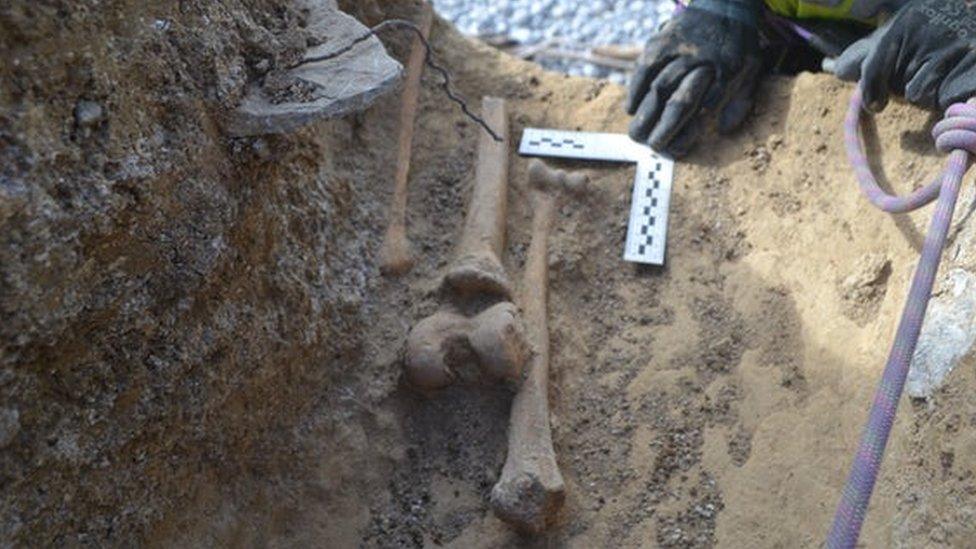
Archaeologists had to use safety ropes to carry out the excavations
Skeletal remains of at least six people, thought to be shipwreck victims from hundreds of years ago, have been revealed by coastal erosion.
Experts have recovered some of their bones from a cliff edge at Cwm Nash on the Glamorgan Heritage Coast.
Other bones have already been lost to the sea, according to Prof Jacqui Mulville from Cardiff University.
The remains of people recovered from the site previously have been found to date from the 16th Century.
Bioarchaeology expert Prof Mulville said: "Our latest thinking is that these are Tudor or Stuart men who may have been the victims of shipwreck.
"We aim to tell more of their stories and return their identities to them through ongoing post-excavation analysis."
The findings are due to be shown on BBC Four's Digging for Britain on Wednesday.
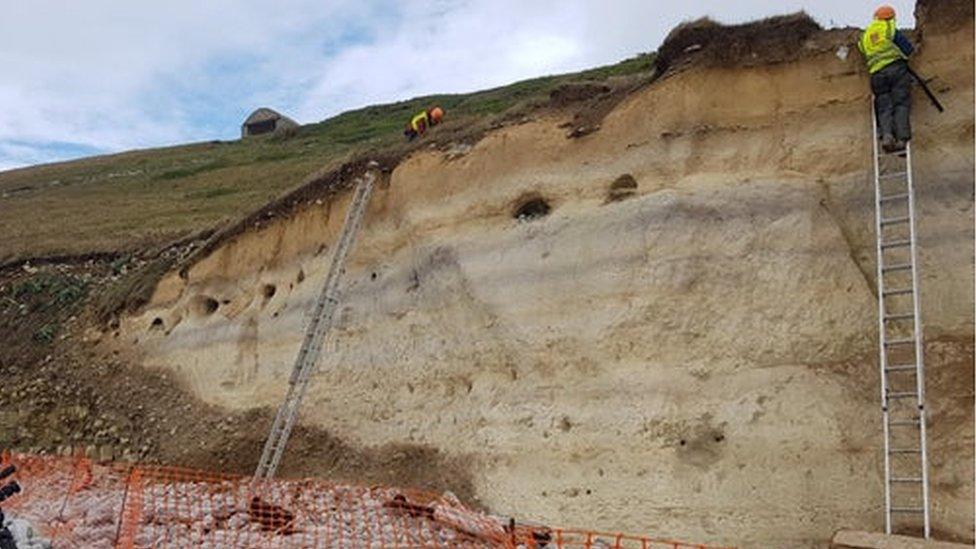
Other bones have already been lost to erosion, according to Prof Jacqui Mulville
The earliest burial licence in the parish of Monknash - the area where the remains have been found - was granted in 1609.
And previous radiocarbon dating of remains found at the site showed they were from the late 16th Century or the early 17th Century, according to details published online, external by the university.
Archaeologists from Glamorgan-Gwent Archaeological Trust (GGAT) worked with Cardiff University experts to excavate the remains with the help of rope experts in July and September.
Geologists and ecologists from Natural Resources Wales also provided assistance as the cemetery is in a Site of Special Scientific Interest.
Further analysis of the bones are expected to be carried out next year.
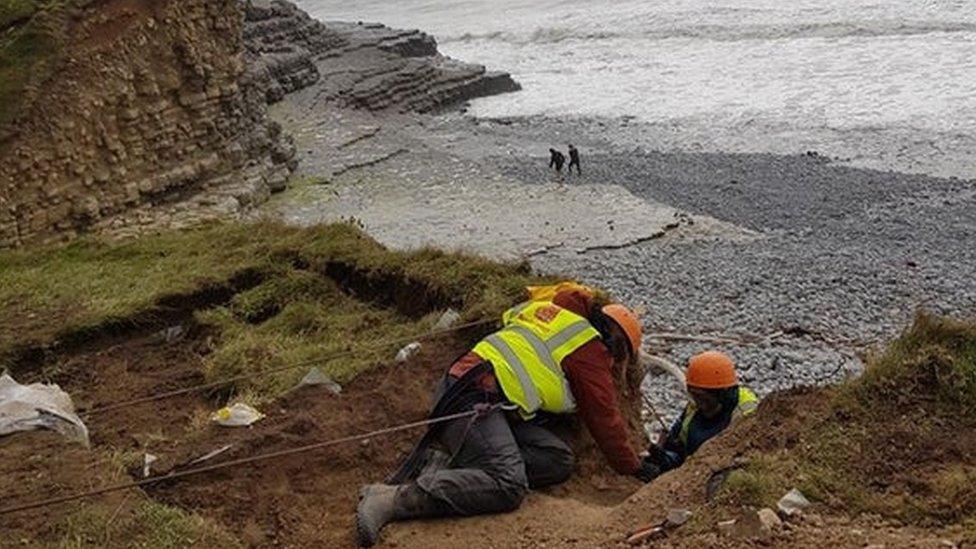
Rope experts helped archaeologists to carry out the excavation
BBC Four's Digging for Britain is on 20 November at 21:00 GMT
- Published11 November 2019

- Published11 November 2019
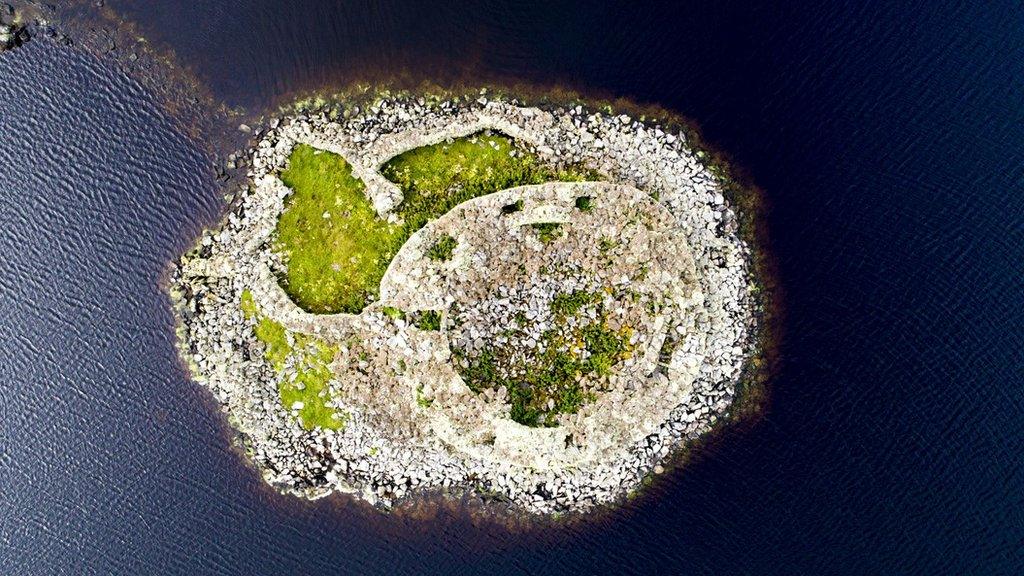
- Published7 November 2019
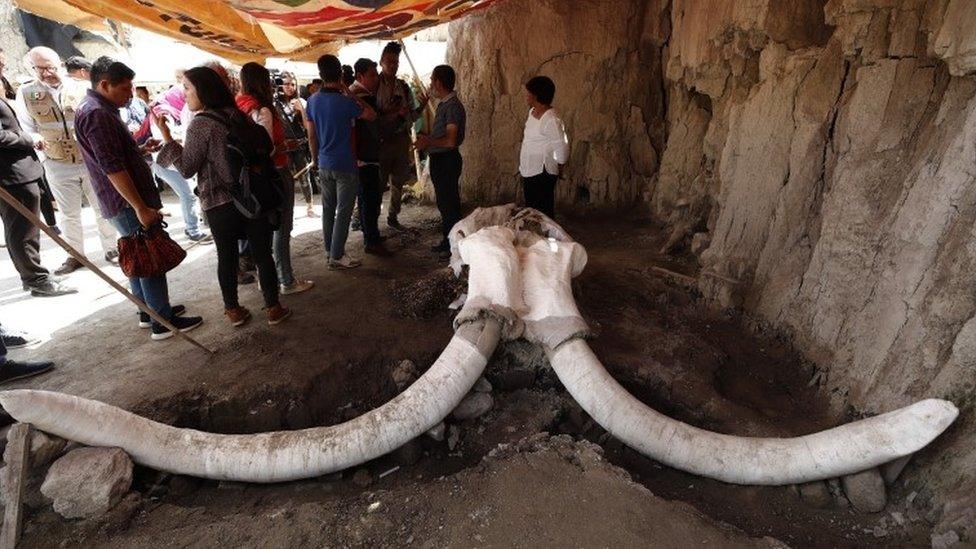
- Published29 October 2019
